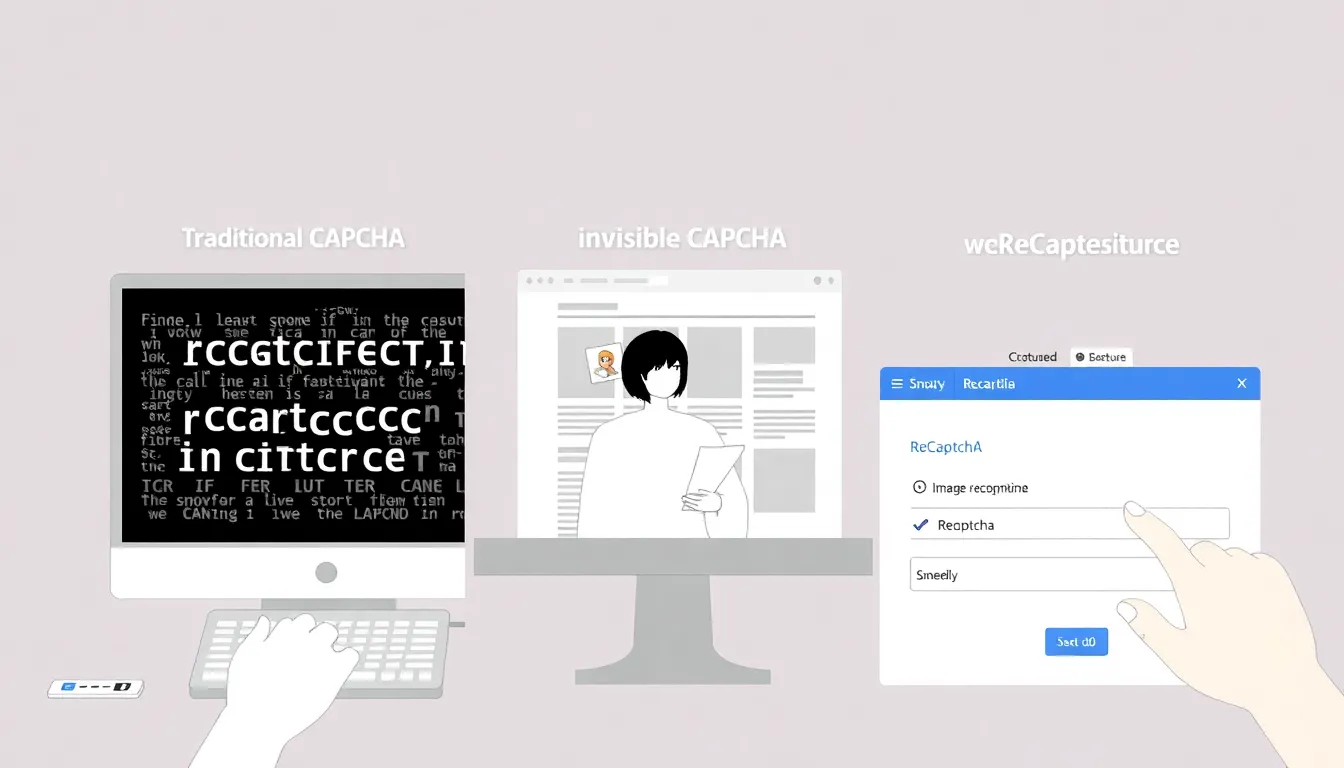In a world where online security feels like a game of whack-a-mole, CAPTCHA integration stands as the trusty shield against pesky bots. It’s like having a bouncer at the door of your website, ensuring only the genuine guests get in. But let’s be honest—who hasn’t found themselves squinting at those distorted letters or clicking on all the traffic lights in a desperate attempt to prove they’re not a robot?
Table of Contents
ToggleOverview of Captcha Integration
Captcha serves as a crucial defense system for online platforms, ensuring user authenticity while minimizing automated abuse. Understanding its functions and significance helps navigate its integration effectively.
What Is Captcha?
Captcha refers to a challenge-response test that distinguishes humans from bots. It often presents tasks, such as solving puzzles or identifying images. Variants include text-based tests and image recognition activities. Each type aims to ensure that only genuine users interact with web services. Many websites implement Captcha during registration, login, or form submissions to enhance security.
Importance of Captcha in Online Security
Captcha plays a vital role in safeguarding websites against spam and malicious activities. By ensuring only legitimate users gain access, it protects sensitive data. Data shows that ineffective bots can generate significant traffic, leading to server overloads and service disruptions. Effective implementation enhances user experience and maintains the integrity of web applications. Integrating Captcha improves overall site security, fostering trust among users.
Types of Captcha Systems
Various CAPTCHA systems enhance online security by effectively distinguishing humans from bots. Understanding these systems helps in optimizing user experience while maintaining website integrity.
Traditional Captcha
Traditional CAPTCHA presents challenges like distorted letters or simple images. Users must interpret these elements to prove they are human. This form requires active engagement, which can frustrate some users. The primary goal remains to thwart automated bots. These CAPTCHAs often struggle with accessibility, making them tricky for visually impaired individuals. Despite challenges, traditional CAPTCHA remains prevalent due to its straightforward implementation.
Invisible Captcha
Invisible CAPTCHA operates discreetly, requiring minimal user interaction. It often assesses behavior patterns or performs background checks without disrupting user experience. Sites using this method maintain a smooth interface. When users interact with the website, it collects data in real-time to determine legitimacy. This system effectively reduces frustration associated with traditional CAPTCHAs while still blocking potential bots. Users typically remain unaware of its presence, making it user-friendly.
ReCaptcha
ReCaptcha, developed by Google, expands on traditional CAPTCHA by introducing advanced techniques for bot detection. It often incorporates image recognition tasks, such as identifying objects in pictures. Users engage with this type through simple checks, like clicking a checkbox. In addition to enhancing security, ReCaptcha improves machine learning algorithms, contributing to AI training. Its flexible nature allows for both visible and invisible systems, adapting to various user needs. Many websites leverage ReCaptcha for its balance between security and user convenience.
Benefits of Captcha Integration
CAPTCHA integration significantly improves security for online platforms while maintaining user engagement.
Enhanced Security
Enhanced security ensures protection against fraudulent activity. Implementing CAPTCHA protocols prevents unauthorized users from accessing sensitive information. By requiring users to complete verification tasks, the system effectively blocks automated bot attacks. Advanced CAPTCHA features utilize machine learning to adapt and improve over time, offering stronger safeguards. These measures help maintain the integrity of websites, making them less vulnerable to hacking and data breaches.
Improved User Experience
Improved user experience is a key advantage of modern CAPTCHA systems. Innovative CAPTCHA types require less user interaction, making the completion process smoother. Users appreciate methods like Invisible CAPTCHA, which assesses their behavior discreetly, allowing seamless access to services. Balancing security with convenience enhances overall satisfaction, minimizing frustration often associated with traditional CAPTCHAs. A positive user experience fosters confidence in the platform, encouraging repeat visits and increasing engagement.
Reduced Spam and Bots
Reduced spam and bots lead to a cleaner online environment. Implementing CAPTCHA dramatically decreases the volume of irrelevant submissions and malicious actions on websites. Protection against automated bots helps maintain accurate data for businesses and improves communication integrity. Users face fewer unwanted advertisements and bogus comments as a result of efficient CAPTCHA strategies. The effectiveness of these tools cultivates a trustworthy interaction space for users and businesses alike.
Challenges in Captcha Integration
CAPTCHA integration presents several challenges that can affect both security and user experience. Identifying these challenges is crucial for effective implementation.
User Accessibility
User accessibility remains a significant concern in CAPTCHA integration. Traditional methods, such as distorted letters, pose difficulties for individuals with visual impairments. Many users struggle with these challenges, which can alienate a portion of the online audience. Alternative solutions, such as auditory CAPTCHAs, provide some relief but are not universally adopted. It’s essential to consider that accessibility features enhance overall usability and foster inclusivity across platforms.
Technology Adaptation
Technology adaptation often proves difficult when integrating CAPTCHA systems. Older systems may lack compatibility with newer technologies, leading to security vulnerabilities. Many web developers face challenges in updating existing security frameworks to incorporate advanced CAPTCHA features. Additionally, the rapid evolution of bot technology necessitates frequent updates to keep defenses effective. Web applications must adapt to counter increasingly sophisticated attacks, ensuring user security without compromising convenience.
Potential Frustration for Users
Potential frustration for users arises primarily from complex CAPTCHA challenges. Users frequently encounter intricate puzzles that can lead to annoyance and abandonments. Some struggle to complete task-oriented CAPTCHAs, resulting in a poor experience. Frustration can hinder user engagement and decrease retention rates on websites. Balancing security with user-friendly features plays a crucial role in minimizing this concern while maintaining effective bot protection.
Best Practices for Implementing Captcha Integration
Implementing CAPTCHA effectively requires careful consideration of several best practices.
Choosing the Right Type of Captcha
Selecting an appropriate CAPTCHA type enhances both security and user experience. Traditional CAPTCHAs may deter bots but often frustrate users with complex challenges. In contrast, Invisible CAPTCHAs assess user behavior without interaction, offering a smooth access experience. Google’s ReCaptcha combines advanced techniques like image recognition and machine learning, catering to various user needs. Developers can evaluate their audience’s preferences and choose the type that aligns best with their website goals. Prioritizing user-friendly options fosters engagement and reduces abandonment rates.
Seamless User Experience
Creating a seamless user experience is vital for retaining visitors on a website. CAPTCHAs shouldn’t disrupt users’ interactions or be overly complicated. Implementing modern CAPTCHA types that require minimal interaction allows users to navigate websites more smoothly. Visual and auditory options contribute to accessibility, ensuring all users can engage with the website effectively. Testing different implementations helps identify solutions that maintain security without sacrificing convenience. Focusing on a user-centric design enhances satisfaction and encourages repeat visits.
Regular Updates and Maintenance
Regular updates and maintenance of CAPTCHA systems ensure ongoing security and effectiveness. As bot technology evolves, outdated CAPTCHA measures can lose their effectiveness. Developers need to routinely assess CAPTCHA performance and update features to stay ahead of emerging threats. Employing analytics can identify potential vulnerabilities and usability issues. A proactive approach minimizes risks and maintains a robust defense against automated attacks. Prioritizing ongoing improvements fosters a secure online environment while preserving user trust.
Conclusion
Implementing CAPTCHA integration is essential for maintaining a secure online environment. By effectively distinguishing between humans and bots, it safeguards sensitive data and enhances user trust. The evolution of CAPTCHA systems towards more user-friendly options like Invisible CAPTCHA demonstrates the industry’s commitment to balancing security with accessibility.
As web developers continue to adapt to emerging threats, prioritizing seamless user experiences will be crucial. Regular updates and thoughtful implementation can significantly reduce frustration while ensuring robust protection against malicious activities. This proactive approach not only fosters a trustworthy interaction space but also encourages users to engage more frequently with online platforms.





